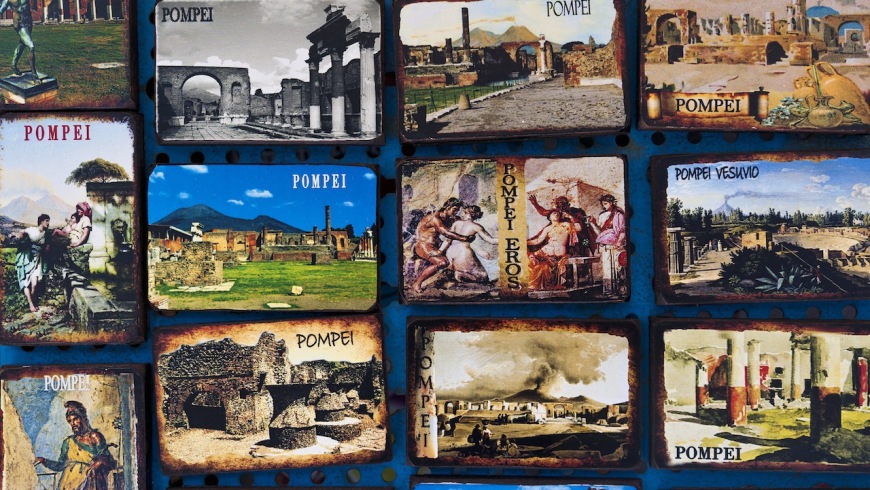
The archaeological excavations of Pompei, that were started at the behest of Charles III of Bourbon, are one of the most important examples of Roman cities in the first century after Christ.
They returned the remains of what was kept under a blanket of ash and lava after the eruption of Vesuvius in 1979.
Most of the finds recovered (and the frescoes, mosaics and statues) are now in the National Archaeological Museum of Naples and a small quantity in the Pompei Antiquarium, which is currently closed.
In the last decade the site of Pompei has been visited by an average of more than two million people a year, and in 2013 was found to be the second site in Italy per number of visitors: 2457051 entrances, with a gross income of 20,337 .340,30 € (at the top of the standings was the museum complex that includes the Colosseum, Roman Forum and Palatine Hill). Since 1997, the ruins are included in the UNESCO list of World Heritage of Humanity.
Appendix
The law of August 6th, 1981 n. 456 decreed the creation of the Archaeological Superintendence of Pompeii in the aftermath of the earthquake of 1981, operating the territorial separation of the Vesuvian towns from the rest of the province of Naples and the National Archaeological Museum, by the will of the Bourbons it had been intended to receive, in addition to Farnese collection, antiquities from the excavations of Pompei and Herculaneum.
The law of October 8th, 1997, no. 352, art. 9 equip the Superintendent of scientific, organizational, administrative and financial autonomy; the Superintendent Archaeologist joins the figure of an Administration Manager.
The D.P.R of November 26th, 2007 n. 233 establishes the Special Superintendence for Archaeological Heritage of Naples and Pompei, with, as the new Museum centers, budgetary autonomy. The local jurisdiction spans the entire province of Naples and includes in addition to Pompeii, Herculaneum and the Vesuvian sites, the Phlegraean area (with the sites of Cuma, Pozzuoli, Baia), the city of Naples and the Archaeological Museum, the Sorrento coast, Capri and Ischia. A few months after the establishment of the Special Office, the Prime Minister’s Decree of the 4th July 2008, declared a state of emergency in relation to the situation of great danger in place in the archaeological area of Pompei and appointed a Special Commissioner, ending its activities July 31st, 2010, the date beyond which the Special Superintendent returned to a system of management.
Since January 2014, the Superintendence for Archaeological Heritage of Naples and Pompei is in two institutions, one with expertise in Naples and Caserta and the other with expertise in the Vesuvian sites (Pompeii, Herculaneum and Stabiae, Oplontis and Boscoreale) and becomes the Superintendence for Cultural Heritage of Pompei, Herculaneum and Stabiae.